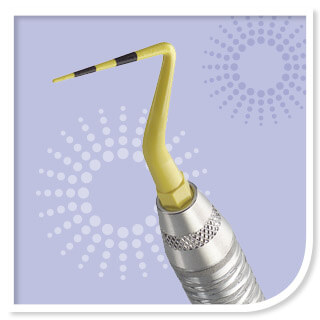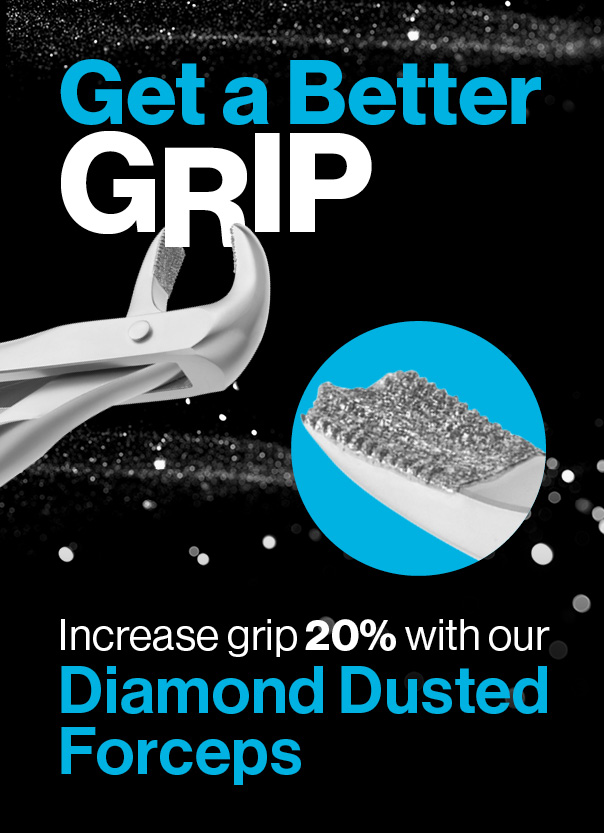Blog
Periodontal Charting: Profitable or Not?

How Faster Charting Impacts Your Practice and Your Patients
By Emme Sanders, RDH with Inspired Hygiene
 Most dental hygienists probably wouldn’t admit this publicly, but very few of us enjoy periodontal charting. It takes a lot of time to move from tooth to tooth for each patient, tediously measuring and recording pocket depths at six points – time, it often feels, would be better spent doing other things.
Most dental hygienists probably wouldn’t admit this publicly, but very few of us enjoy periodontal charting. It takes a lot of time to move from tooth to tooth for each patient, tediously measuring and recording pocket depths at six points – time, it often feels, would be better spent doing other things.
In fact, one study of 2,488 records from 36 dental practices revealed that only 16 percent of records contained complete periodontic information. “I hate probing!” lamented a hygienist to RDH Magazine. “It is the only part of my job that I truly hate.”
When a hygienist asked me recently if skipping perio charting could make a practice more profitable, it got me thinking. I understand why perio charting is such a chore. It’s not my favorite procedure either. But believe it or not, I find it’s one of the most important things you can do for your patients’ health – and one of the most profitable things you can do for your practice.
As dental hygienists, I believe we need to challenge our beliefs around the time and profitability of perio charting. The truth is, complete perio charting is not only profitable but completely worth the effort. And with the right tools, it’s easy to get it done in less time.
Perio Charting Is a Standard of Care
Before looking at the importance and profitability of periodontal charting, let’s look at the standards:
In its Revised 2016 Standards for Clinical Dental Hygiene Practice, the American Dental Hygienists’ Association says, “A comprehensive periodontal examination is part of the clinical assessment,” including a full-mouth periodontal charting.
A periodontal chart should report six data points, the ADHA says:
- Probing depths
- Bleeding points
- Suppuration
- Mucogingival relationships/defects
- Recession
- Attachment level/attachment loss
Why such a complete chart? Would a faster “spot checking” method be adequate?
“No,” says Beverly Maguire, RDH, writing for RDH Magazine. Without a complete chart, you’re “simply assuming the patient is healthy.” Plus, failure to diagnose periodontal disease could expose your practice to litigation, which would definitely cut into your profits and your reputation.
Perio Charting Is Profitable
The U.S. Centers for Disease Control and Prevention (CDC) says that 47.2 percent of people over the age of 30 have some form of periodontal disease. Periodontal disease afflicts over 70 percent of those over 65 and is a major contributor to tooth loss.
These numbers alone demonstrate the value of perio charting. Perio charts help dentists identify, track, and treat a periodontal disease that may otherwise go unnoticed. Given the prevalence of periodontal disease among the general population, it’s a safe bet to assume it exists among many of your patients as well.
A good rule of thumb is that a thriving hygiene department should perform at least 35 percent periodontal-related services. Now, that’s profitable. It’s the difference between codes D4341, D4342 (scaling and root planning), D4910 (periodontal maintenance), and a simple D1110 (prophylaxis).
At Inspired Hygiene, one of the first things we do when we work with dental teams is evaluate their hygiene department’s perio percentage. Often this comes in at less than 15 percent, with many below five percent. We believe these practices are missing critical opportunities to increase profitability and improve the health of their patients.
Perio Charting Saves Teeth and Lives
 The big question with perio charting, however, shouldn’t be, “Is it profitable to my practice’s bottom line?” Instead, we need to ask, “Is it profitable for my patients’ health?”
The big question with perio charting, however, shouldn’t be, “Is it profitable to my practice’s bottom line?” Instead, we need to ask, “Is it profitable for my patients’ health?”
We know that patients with an active periodontal infection have an elevated risk not only of tooth loss but a cardiovascular event, stroke, and diabetes. If the patient is pregnant, periodontal disease can increase the risk of adverse pregnancy outcomes.
Here’s an example of how periodontal probing can make a difference:
The BaleDoneen Method identifies a long list of “red flags” for cardiovascular disease and stroke. Among these risk factors is gum disease.
Imagine a patient exhibits four of the risk factors: abdominal obesity, elevated blood pressure, anxiety, and gum disease.
Now, imagine you identify and treat the gum disease. This requires going through the burdensome process of perio charting. And yet by doing so, you have now eliminated a major risk factor for the patient, which can help lower the patient’s overall risk for cardiovascular disease and stroke.
Certainly, that’s worthy of our time.
Best Practices for Faster Perio Charting
So far, we’ve seen that perio charting is not only profitable but can also help patients live longer healthier lives. Unfortunately, that doesn’t diminish how arduous the task can be. How can you make perio charting more efficient?
Here are a few tips:
- Work with a partner. You can cut perio charting time drastically by pairing up with an assistant. Instead of having to stop at each tooth – which means putting down your tools, picking up a pen, and writing down numbers – simply call out the numbers and have the assistant write them down. If no one in your office is available to help, talk to your dentist about reorganizing work schedules and job responsibilities to make it happen.
- Invest in a voice-activated charting system. Computer software can now also fill the role of a charting assistant. Tools like Dentrix VoicePro recognize your voice and record chart information as you speak it, leaving your hands free for other work.
- Use instruments that make probing faster. The instruments you choose can carve minutes off each perio chart. For example, Hu-Friedy’s Colorvue probes feature vivid black markings on yellow backgrounds, enabling faster measurement-taking. The PerioScreen probes provide quick and easy screening of periodontal pocket depth prior to definitive probing. A universally understood color-coding of green and red indicates the absence or presence of periodontal disease.
Are You Perio Charting?
Perio charting may feel tedious, but by painstakingly tracking our patients’ periodontal health, hygienists can sound an early alarm when periodontal disease creeps in, which is the first step in preventing it from turning into a dangerous, painful, and costly dental condition.
Our patients and the dentists in our office rely on us to be vigilant on the front lines, with sharp eyes monitoring any changes or warning signs. And when patients put their trust in us to be thorough, dependable, and up to professional standards.
When we elevate our systems and services, we elevate our profits, we elevate our reputation, and we elevate our business.
For more insights into additional ways to improve your practice’s efficiency and profitability, download Hu-Friedy’s ebook, “The Journey to Better: The Top Areas That Must Be Addressed”!


Blog Comments
Periodontal Charting
For 18 years I have not charged for Periodontal Charting, is this something I should be charging for?
Voice activated charting
I would just like to add one thing to Emmas article on probing. Voice activated proving is absolutely the way to go. We don’t need to involve a second person if we have a system that allows us to chart by ourselves. Anyone of these systems will pay for them selves if you think of how much a second staff member would cost to help aid in the charting process. In addition to Dentrix, the Florida probe has a product called Voice works and the dental rat is another option that allows hands-free charting. And both are lots of fun to use.
Perio Charting
Great reminder and reinforcement for all RDH and entire dental team re the value and necessity of comprehensive perio charting.